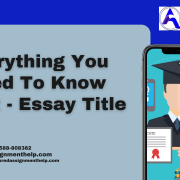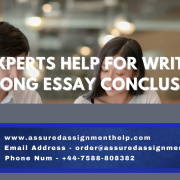Suggested word limit: 2000 words (exclusive of references)
This assessment evaluates the final fulfilment of the unit objectives which seek to
1. Identify and articulate the scope and function of events, exhibition and festivals and their role in the cultural
economy;
2. Critically evaluate the formulation, character, objectives and value of events, exhibitions and festivals and their
role in the cultural economy – locally, nationally and globally;
3. Apply independent research skills to analysis of cultural events, exhibitions and festivals utilising a cultural
economy framework and creative methods;
4. Communicate effectively a breadth and depth of analysis applied to evaluating the character, role and impact of
cultural events, exhibitions and festivals.
To build your skills in citing and referencing, and using different referencing styles, see the online tutorial Academic
Integrity: Demystifying Citing and Referencing at http://www.lib.monash.edu/tutorials/citing/
Assignment Task: create a proposal for an original cultural event, exhibition or festival as defined in this unit.
Your proposal should draw upon primary and secondary research to address the following elements:
1. Problem: why is your CEEF needed? What purpose does it serve or absence in the cultural economy does it fill?
2. Program: describe in breadth and depth (or sample) the experiences you propose to offer in your CEEF and how
does it connect with the wider cultural economy?
3. Scope and scale: what kind of event, exhibition or festival do you propose What is its location, space, size and
duration? How does its offer and character compare and contrast with established CEEF practice?
4. People: who are the audiences, communities of interest or constituencies for your CEEF? In what ways will your
CEEF seek to address and engage them?
5. Stakeholders and support: What kind of commercial, community, public and/or political interests do you envisage
investing in or deem necessary to your CEEF’s character and realisation? What evidence is there for their interest in
CEEFs and what expectations for a ‘return on investment’ might they have?
6. Value: on what basis will you evaluate the effectiveness, success and outcomes of your proposed CEEF? What kinds
of impacts do you envision for it in and out of the cultural economy?
7. Creative personnel: identify and outline the key role/s that would give the CEEF its character and realise its scope.
You can do this in two ways, or combine the approach:
i. produce a ‘job description’ of the duties of the role including the expectations, qualities and experience
required of any individual in it.
ii. identify a named creative worker or cultural intermediary, outlining why they have the qualities,
experience and creativity required as well as any evidence to suggest how they would deliver your
CEEF.
8. Challenges and risks: What kinds of challenges and risks does your proposed CEEF need to address? In particular,
what kind of environment and conditions can stakeholders, contributors and participants expect from your CEEF?
Presentation guidance
You are invited to take a ‘portfolio’ approach to the presentation of your proposal which allows for creative interpretation
in addressing the key elements listed above.
A proposal is not a set of unrelated descriptions but is founded in n evidence-based argument that seeks to make a case
that your CEEF is necessary and worth assessing for its viability. Thus, it is necessary to imagine to whom or what your
proposal is addressed.
You could consider presenting this as a proposal for an event or creative critical review that imagines the CEEF after the
fact.
Nonetheless, this is a scholarly exercise in which should aim to communicate with clarity and authority informed by
primary and secondary research to make your case.
This task does not require that you outline a budget or practical logistics for your proposed event.
You are encouraged to use your imagination for your proposal but it must be based in the precedents, realities,
possibilities and limitations informed by research, even if you wish to critique and reject them.
Your proposal is judged on the ideas and clarity of research-informed case you present, not on the basis of any artistic
merit but you are encouraged to include in your presentation images, diagrams, screen grabs, quotations and other
supporting materials in support of your prose.
You should support your proposal with in-text citations (Harvard, Chicago or APA preferred). Please consult the Library
Guide for effective referencing, and a list of primary and secondary sources as appropriate.
Assessment Criteria
Identification and understanding of the character, scope and function of cultural events, exhibition and festivals
and their role in the cultural economy
Sourcing of independent research of breadth and depth in analysis of cultural events, exhibitions and festivals
utilising a cultural economy framework;
Application of knowledge to the creative formulation, character, objectives and value of events, exhibitions and
festivals and their role in the cultural economy.
Creative communication, cohesion of proposal and effectiveness of proposal
To build your skills in citing and referencing, and using different referencing styles, see the online tutorial Academic
Integrity: Demystifying Citing and Referencing at http://www.lib.monash.edu/tutorials/citing/










